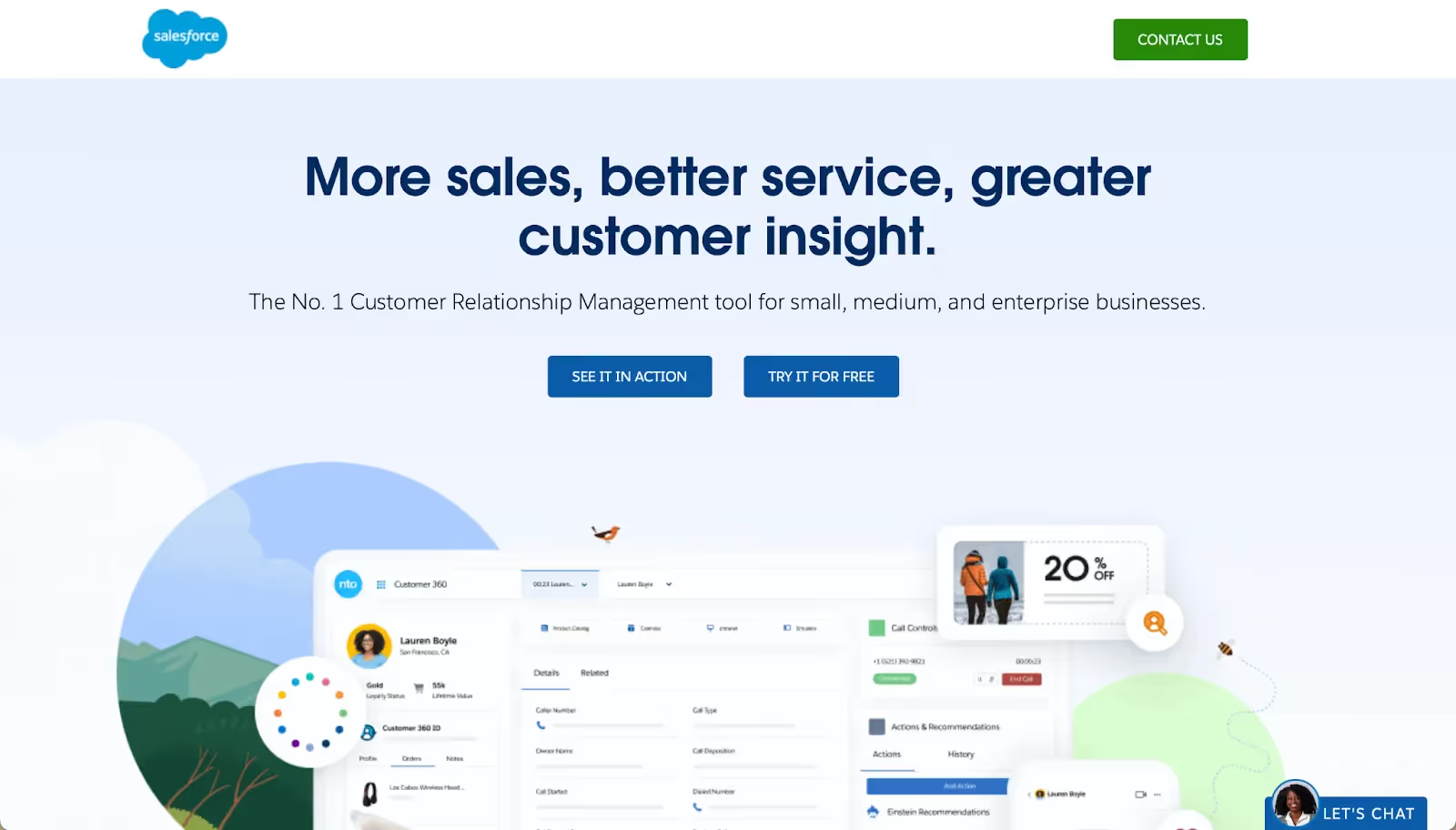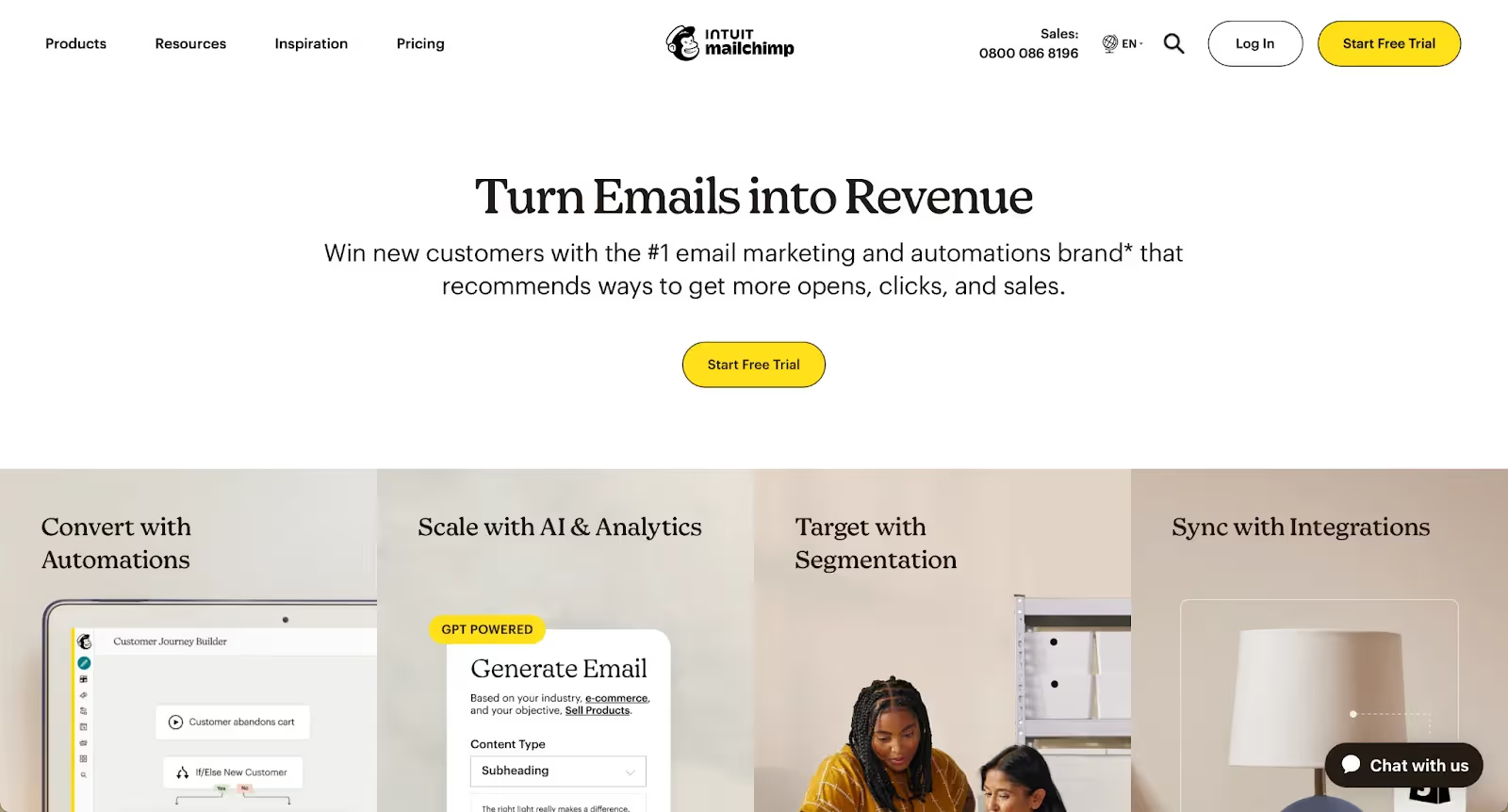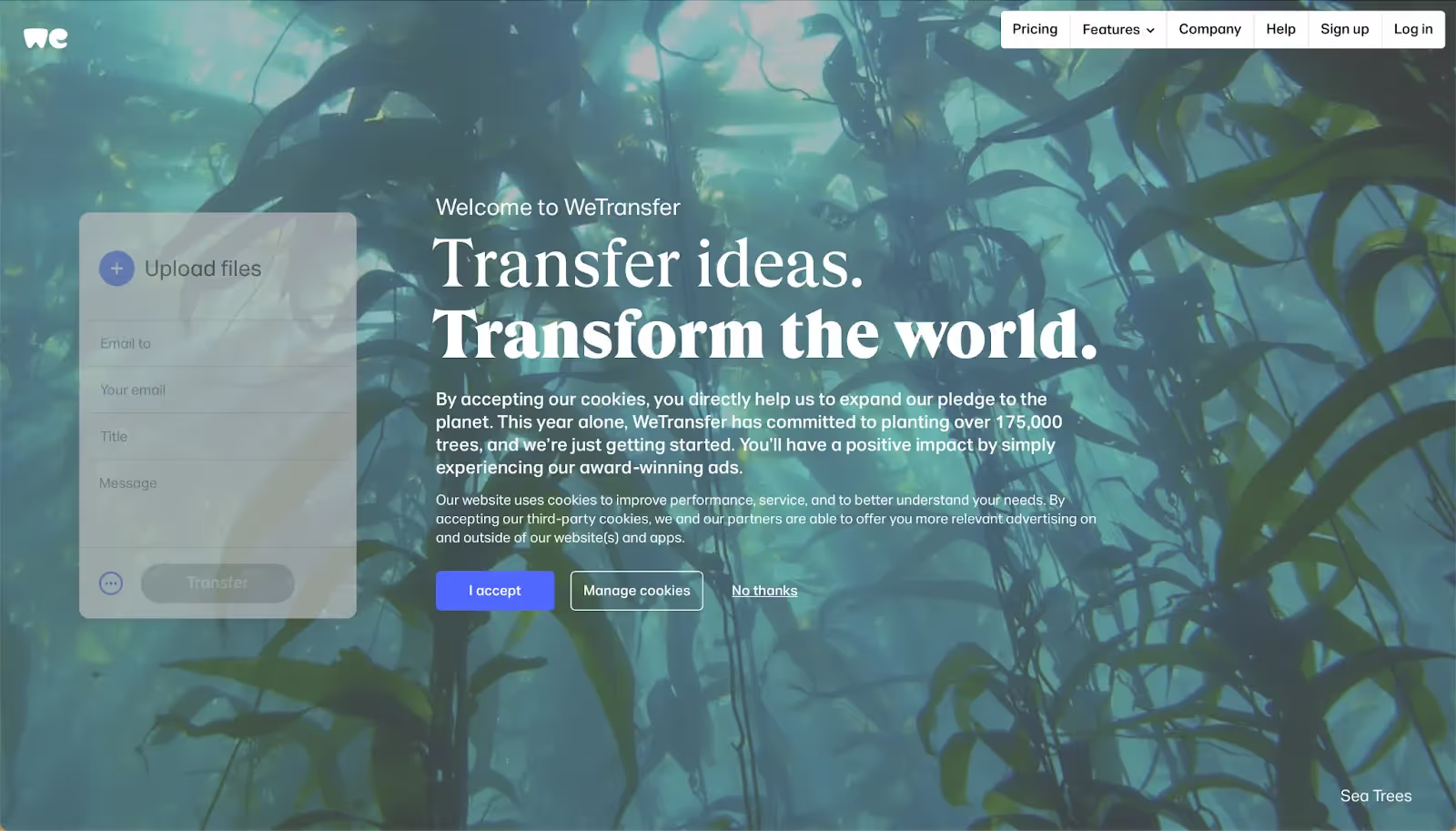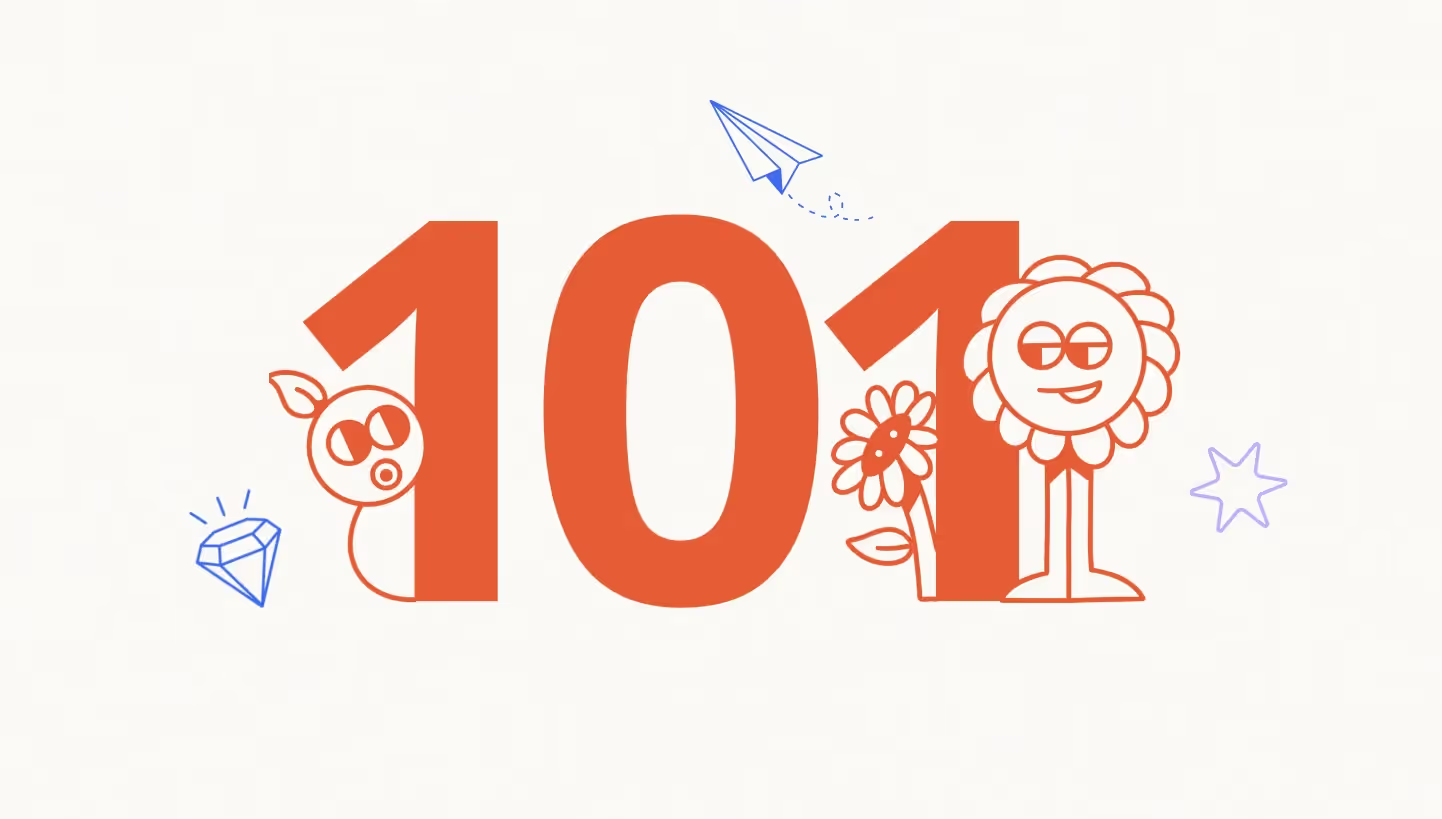How to Write Compelling Homepage Headlines for High-Converting SaaS Landing Pages

Max White
Copywriter & Strategist
Max is often found searching west-county coastlines for the perfect "right-hander". We're not sure what that means, but he seems to enjoy the never-ending hunt for waves. He also happens to be a pretty handy wordsmith.
Max White
Copywriter & Strategist
A website headline is a short, powerful statement that communicates your offering with clarity, differentiates you from your competitors and positions you in the market. But why does it matter?
Your headline is your brand's first impressions, it’s the first opportunity for a customer to make an assessment of your brand–something research suggests can last months. The best headlines must pique curiosity, provoke emotion, and promise value.
In this article we're going to teach you how to write effective homepage headlines that will bring customers like bees to honey. Here's what we're going to go through:
- Understanding your audience’s customer journey
- Identifying your unique selling proposition (USP)
- Different types of homepage headlines and which to choose
- Using emotion and story to drive conversions
- Power words and sensory language
- How to A/B test your headlines
- The impact of tone, voice and personalisation
- Best-in-class examples
- And much much more.
By the end of this guide, you'll be equipped for writing headlines that not only attract but also resonate with your target audience, nudging them further down the conversion funnel towards becoming loyal customers.
The Basics of Writing a Compelling Homepage Headline
Understanding Your Target Audience
Writing a great headline requires an in-depth understanding of your target audience, going beyond mere demographics to uncover their needs, desires, pain points, and the language that resonates with them.
This knowledge becomes even more crucial in the SaaS products realm, where your audience could be diverse—individual users, team managers, company founders, marketing leads, or product managers. A 'team performance improvement' angle may appeal to a manager, while an 'individual productivity boost' theme would strike a chord with individual users.
One way to uncover insights into your audience is by creating buyer personas––fictional, generalised representations of your ideal customers. This exercise helps you visualise your audience and develop more targeted messaging.
You could also consider mapping your customer's journey––their needs and expectations at each stage of the buying process. At one stage they might need reassurance, whilst another may have them seeking further information.
When you know your target audience well, you can write effective homepage headlines that speak directly to their specific concerns and showcase how your SaaS product can solve their problems or improve their lives.
Identifying the Unique Selling Proposition (USP)
Your headline must capture the essence of your unique selling proposition (USP) - the distinct value that sets your product apart from the competition. It's what makes your product stand out and convinces potential customers that it's worth their time and investment.
To identify your USP, ask yourself the following questions:
- What does our product do better than anyone else's?
- What functional needs does our product fulfil?
- What emotional problems does our product solve?
Once you've pinpointed your USP, ensure that your headline emphasises this value. By highlighting your USP in your headline, you help potential customers immediately understand why your product is the best choice for them.
Understand Your Features, Benefits and Capabilities
Understanding how your products affect your users is key to writing a good headline. We like to work through a feature → benefit → capability ladder. For example:
Feature = book a meeting in my calendar automatically.
Benefit = saves time for both parties.
Capability = a full calendar of lead calls without lifting a finger.
Going through these steps with your product will not only clarify your message on a sales call, but will also help you refine your headlines as you begin to write them.
Using Emotional Triggers to Connect with Your Audience
Emotions play a significant role in decision-making. By tapping into emotional triggers, your headlines forge a connection with potential customers and encourage them to take action.
Some common emotional triggers include:
- Curiosity: Pique interest by teasing a benefit or outcome - “Discover the Secret to Successful Project Management”
- Fear: Address a potential pain point or the fear of missing out (FOMO) - “Don't Let Downtime Hurt Your Business”
- Urgency: Create a sense of urgency with time-sensitive offers or limited availability - “Limited Time Offer! Get 30% Off Your First Year Subscription
- Trust: Establish credibility with social proof or expert endorsements - “Join 10,000+ Businesses Globally Trusting Our Secure Cloud Services”
This is where your knowledge of your customer becomes paramount–your language must feel right to them, not as if it’s coming out of the blue. If you’re not sure, more research is needed!
Keeping it Simple and Clear
In good headline writing, simplicity and clarity reign supreme. Your audience should understand the category you are in and how your product benefits them in as fewer words as possible. Avoid using industry jargon, buzzwords, or complex language that might confuse or alienate readers.
A clear, concise headline communicates the core benefit of your product and compels potential customers to explore your landing or home page further. It sounds simple, but don’t beat yourself up here, eye-catching headlines are one of the most challenging piece of copy on your website.
Using Keywords in Your Headlines
Strategically incorporating SEO keywords into your headlines serves a dual purpose. First, it helps your landing pages rank higher in search engine results, attracting more organic traffic. Second, it aligns with the language and search habits of your target audience, making your homepage headlines more relevant and relatable.
Conduct keyword research to identify the terms your audience uses when searching for solutions like yours. Incorporate these keywords naturally into your headlines to improve SEO and connect with potential customers. However, avoid keyword stuffing, as cheap tactics like this can harm your search engine rankings and dilute your message.
The Different Types of Headlines for Landing Pages
Creating the perfect home page headline involves more than just understanding your audience and your USP. It also requires choosing the right headline formulas for your specific offering, audience, and context. Below, we explore several effective types of homepage headlines that you can use on your landing pages to bring down your bounce rate.
Benefit-Driven Headlines
Benefit-driven headlines focus on the primary advantage or outcome that your product or service offers to the customer. This type of headline directly answers the customer's question, "What's in it for me?" By clearly stating the benefit, you align with the customer's desires and give them a compelling reason to explore further.
Example: "Boost Your Sales by 50% with Our AI-Powered CRM"
Problem/Solution Headlines
Problem/solution headlines identify a common pain point your target audience faces and present your product or service as the solution. By emphasising the problem first, you show empathy and understanding, then follow up by offering a resolution and demonstrating your product's value.
Example: "Tired of Disorganised Projects? Try Our Efficient Task Management Tool."
How-To Headlines
How-to headlines provide a promise of practical, actionable information. They suggest that the reader will learn something valuable, making this type of headline particularly effective for landing pages promoting informational products, webinars, or tutorials.
Example: "How to Streamline Your Workflow with Time-Tracking Software"
List-Based Headlines
List-based headlines promise multiple benefits or solutions, often in a digestible, easy-to-understand format. The use of numbers in these headlines can make your offering more tangible and enticing to potential customers.
Example: "7 Ways Our Analytics Tool Can Transform Your Data Interpretation"
Question Headlines
Question headlines engage the reader by prompting them to think or reflect. When using this type of headline, ensure to use an interesting question which aligns with a query or concern your target audience likely has. From there you can show your product or service provides the answer.
Example: "Want to Improve Your Team's Collaboration? Discover Our Comprehensive Communication Platform."
Testimonial Headlines
Testimonial headlines leverage positive customer reviews or endorsements to build trust and credibility. By demonstrating that others have had a positive experience with your product or service, these headlines can help alleviate doubts or concerns potential customers may have.
Example: "Our Software is 'A Game Changer,' Says Fortune 500 CEO"
Negative or Loss Aversion Headlines
Negative or loss aversion headlines tap into the psychological principle that people are more driven to avoid pain than to gain pleasure. By highlighting a potential loss or negative outcome, you can motivate potential customers to take action to avoid that scenario.
Example: "Stop Wasting Money on Inefficient Marketing Tools"
Command Headlines
Command headlines directly tell the reader what to do. They're typically action-oriented and use strong verbs. This type of headline can be particularly effective when you want to encourage a specific action, like signing up for a trial or downloading a guide.
Example: "Switch to Our Reliable Project Management Tool Today"
News or Announcement Headlines
News or announcement headlines work well when you have something new or exciting to share, like a product launch or a major update. They capitalise on the human interest in novelty and can create a sense of urgency or exclusivity.
Example: "Introducing Our New AI-Powered Email Marketing Feature"
Curiosity Headlines
Curiosity headlines pique the reader's interest and make them want to learn more. They often involve some level of suspense or intrigue. However, ensure that your headline isn't too vague – it should still give a clear indication of what your product or service is about.
Example: "Discover the Secret to Skyrocketing Your Online Sales"
Quick Tips for Effective Headlines
Beyond understanding your audience and choosing the right type of headline, there are several other strategies you can employ to create better headlines that attract attention, resonate with readers, and compel them to take action. Here are some proven tips for writing effective headlines.
Using Action-Oriented Language
Action-oriented language encourages the reader to take immediate action. Incorporate strong verbs that provoke emotion or excitement to make your headline more compelling. You'll have seen many examples of this style with blog post headlines.
Example: "Maximise Your Marketing ROI with Our Comprehensive Analytics Tool"
Using Power Words and Sensory Language
Power words are persuasive, emotional words that trigger a response from the reader. They can make your headlines more appealing and impactful. Similarly, sensory language—words that appeal to the five senses—can make your headlines more vivid and engaging.
Using Numbers and Statistics
Numbers and statistics can make your headlines more specific and credible, improving click-through rates. They give the reader a clear idea of what to expect.
Example: "Increase Your Productivity by 40% with Our Time-Tracking Software"
Testing and Optimising Your Headlines
Always test different headline variations with website visitors to see which performs best. This could be as simple as an A/B test where you compare two versions or more complex multivariate testing. Use the data to continually optimise your headlines for better results.
The Impact of Social Proof on Headline Effectiveness
Including social proof—like customer testimonials or the number of customers—in your headline can increase trust and credibility. This can be particularly effective in testimonials or news headlines. Social proof is especially important step for small businesses, who might like the client list or price point to compete.
Example: "Join 5,000+ Businesses Streamlining Their Processes with Our Software"
The Use of Urgency and Scarcity Tactics in Headline Writing
Creating a sense of urgency or scarcity can encourage readers to take immediate action. This could involve highlighting a limited-time offer or a limited quantity of product. Personally, we’d use this with extreme caution as it can feel cheap and forceful.
Example: "Only 24 Hours Left to Get 50% Off Our Project Management Tool"
The Impact of Tone and Voice on Headline Effectiveness
The tone and voice of your headline should align with your brand's vision and messaging guidelines to ensure it resonates with your audience. A professional, authoritative tone might work best for some audiences, while a casual, friendly tone might be more effective for others.
The Role of Storytelling in Headline Writing
Incorporating elements of storytelling can make your headlines more engaging and memorable. This could involve presenting a challenge and a resolution or hinting at a transformation or journey. These headlines often provoke human truths.
Example: “Remember everything” - Evernote.
The Use of Humour
Humour can make your headlines more engaging and memorable. However, it's important to use humour carefully, as it may not resonate with all audiences, and could potentially dilute the perception of the value you're offering.
Design Considerations For Headline Writers
The Importance of Aligning Your Headline with Your Landing Page Content
Alignment between your headline and your landing page content is critical. If your headline promises something, ensure that you have quality content below which delivers on that promise. This builds trust and improves the likelihood of the reader taking the desired action.
Work with your design and development team to ensure a page flows as a reader would expect it to–otherwise, you may as well not spend hours crafting the perfect headline!
The Role of Visuals, Fonts, and Colour in Supporting Your Headlines
Visual elements like images, fonts, and colours can help draw attention to your headline and enhance its impact. You should work with your design team to ensure these elements align with your brand identity and support the message you’ve crafted.
Or even better… Jump the gun and get an idea of what visual cues and design elements your team are working on. This will allow you to tailor your language to create a cohesive visual and linguistic narrative.
Six Great SaaS Homepage Headline Examples and Why They Work
Meisternote: "Write here. Write now." - This catchy headline is short and action-oriented. It prompts immediate action (Write now) while subtly implying that Meisternote is the platform to do it (Write here). The play on "right here, right now" gives it a clever twist that makes it memorable.

Salesforce: "More sales, better service, greater customer insight." - Salesforce utilizes a list-based headline here, succinctly summing up three key benefits their platform offers. It's a powerful way of communicating to potential customers the tangible outcomes they can expect from using the service.

Mailchimp: "Turn Emails into Revenue." - This headline is a great example of a benefit-driven statement. It clearly illustrates the main advantage of using Mailchimp: transforming a common business task (emails) into a desirable outcome (revenue). It's straightforward, compelling, and speaks directly to a company's bottom line.

Maze: "Unlock customer insights, make better product decisions." - Maze's headline is a problem/solution example. It identifies two key concerns for businesses: understanding customers and making informed product decisions. By suggesting that their tool can help "unlock" these insights, it positions Maze as the solution to these issues.

Figma: "Nothing great is made alone." - Figma's homepage headline takes a storytelling approach, evoking a universal truth about collaboration. This speaks to their platform's core value proposition: collaborative design. It's an emotionally engaging statement that also subtly communicates the benefit of using Figma for team projects.

WeTransfer: "Transfer ideas. Transform the world." - This headline from WeTransfer is evocative and aspirational. It emphasizes the transformative power of ideas, positioning their service as a tool for global change. It's brief, memorable, and emotionally engaging.

A six-step framework to assess your headlines
So you’ve written some headlines, but in the haze of your creativity, you can’t pick your favourite. It’s for just this situation that we’ve devised our six-step framework to asses your headline.
- Relevance: Does the headline accurately reflect the content of your landing page? It should offer a clear and concise preview of your brand. Misleading headlines might generate clicks, but they'll also lead to high bounce rates and damage trust with your audience.
- Clear audience: It should be immediately clear who you’re speaking to. Your offering might sound great, but if a client isn’t sure it’s for them, you’ll be out of luck.
- Clarity: Is the headline easy to understand? Avoid industry jargon, complicated words, or convoluted phrases. Your headline should be clear and straightforward, so anyone can immediately understand the value you're offering.
- Emotional Appeal: Does the headline connect with your audience on an emotional level? Great headlines often tap into desires, fears, or aspirations. They can use power words and emotional triggers to create a strong reaction.
- Uniqueness: Is the headline unique? Your headline should highlight what makes your offer different from competitors. This could be a unique selling proposition (USP), a special offer, or an innovative approach.
- Call to Action: Does the headline encourage action? While not every headline will have a direct call to action, it should still inspire the reader to explore further, read more, or engage with your content.
Remember, the best way to refine your headlines is through testing. Regularly review and adjust your headlines based on performance metrics and audience feedback to ensure they remain effective over time.
Of course, we’re always happy to lend a hand–our team of copywriters and strategists do this on the regular. You can reach them here.


